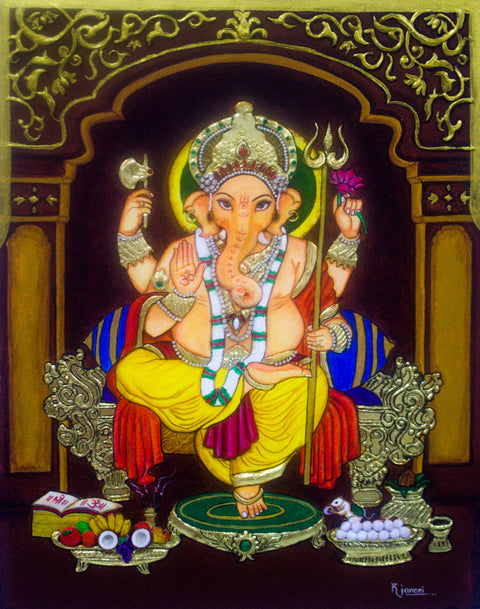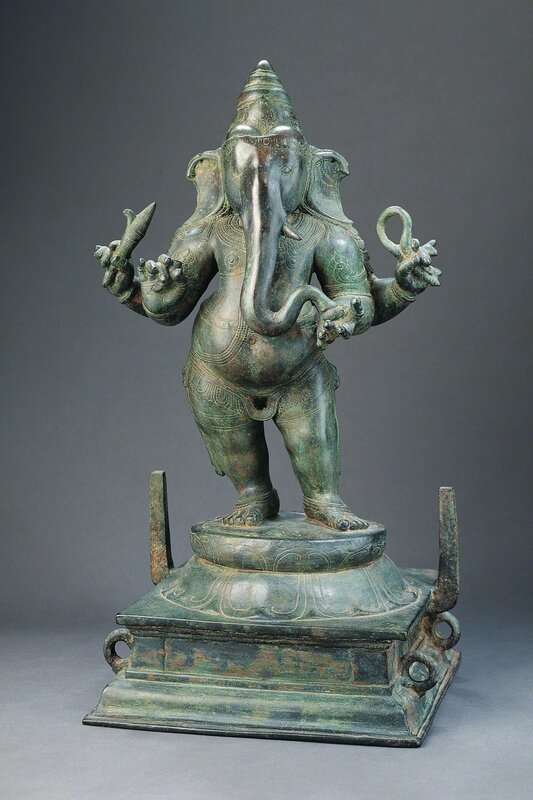
The History of Ganesha Art: A Journey Through Time
Ganesha, the elephant-headed deity, is one of the most beloved and widely recognized figures in Hinduism. Known as the remover of obstacles, the patron of arts and sciences, and the deity of intellect and wisdom, Ganesha's imagery has evolved significantly over the centuries. Let's explore the rich history of Ganesha art, tracing its origins, transformations, and the diverse artistic expressions it has inspired.
Ancient Origins
The earliest depictions of Ganesha date back to the Gupta period (4th to 6th centuries CE). During this time, Ganesha was typically represented with a human body and an elephant head. Early sculptures often showed him in a seated position, symbolizing his role as a mediator and remover of obstacles. These ancient artworks were primarily carved in stone and bronze, featuring intricate details that highlighted the deity's divine attributes.

Medieval Flourishes
During the medieval period, particularly between the 8th and 12th centuries, Ganesha's iconography became more standardized. This era saw the proliferation of temple sculptures, with Ganesha often depicted as a pot-bellied figure, holding various attributes such as a broken tusk, a goad, and a bowl of sweets (modakas). The Chola dynasty in South India produced some of the most exquisite bronze statues of Ganesha, which are celebrated for their artistic finesse and spiritual depth.

Mughal Influence
The Mughal period (16th to 18th centuries) introduced new artistic elements into Ganesha's iconography. Although the Mughal rulers were predominantly Muslim, their courts were cultural melting pots where Hindu artists flourished. Miniature paintings from this era often depicted Ganesha in vibrant colors, showcasing a blend of Persian and Indian artistic styles. These paintings were characterized by intricate details, ornate backgrounds, and a focus on narrative scenes from Ganesha's legends.

Modern Interpretations
In the 19th and 20th centuries, Ganesha art experienced a renaissance, with artists experimenting with various styles and media. Raja Ravi Varma(ancestor of our artist Ramanan and Janani), one of India's most celebrated painters, popularized Ganesha's image through his prints, which combined traditional Indian themes with European techniques. In contemporary times, Ganesha's imagery has been adapted into numerous forms, including digital art, street art, and even pop culture.

Modern Digital Art of Ganesha
Ganesha in Global Art
Ganesha's appeal transcends cultural and geographical boundaries. In Southeast Asia, for instance, Ganesha is revered in countries like Indonesia, Thailand, and Cambodia, where his imagery is adapted to local artistic traditions. Similarly, in the Western world, Ganesha has become a symbol of wisdom and success, often featured in yoga studios, homes, and offices.
Conclusion
The evolution of Ganesha art reflects the dynamic interplay between religion, culture, and artistic expression. From ancient stone carvings to modern digital renderings, each depiction of Ganesha offers a unique glimpse into the history and spirituality of the times. As we continue to celebrate Ganesha through art, we not only honor his divine attributes but also the rich cultural heritage that his image embodies.
By appreciating the diverse artistic representations of Ganesha, we gain insight into the enduring legacy of this beloved deity and the timeless appeal of his story.

Comments (0)
There are no comments for this article. Be the first one to leave a message!